
Part V: The Fourth Way
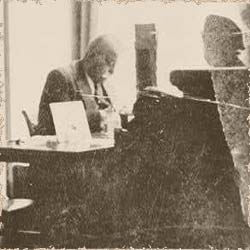
Gurdjieff Writing at the Café de la Paix, Paris
It marks the shattering of an illusion. If he hasn’t grafted an offshoot of ancient schools in the West by his late fifties, he probably never will. Followers driven by hopes of such an establishment now drop off. Those who remain do so with the notion that change and uncertainty will be the norm.
After disbanding the Institute, Gurdjieff shifts his focus from the Prieuré to writing. He sketches plans on an ambitious scale that hit many difficulties. His writings will eventually be published, with considerable help from his students, at varying degrees of completion, and not to the full satisfaction of their author.
Besides this, Gurdjieff composes music. He choreographs more movements. He develops different groups at different times and works with them differently. In short, he continues experimenting with different forms till the end of his life, echoing the very spirit of the Fourth Way.

Gurdjieff Writing at the Café de la Paix, Paris

Thomas de Hartmann, with whom Gurdjieff composed his music

Thomas de Hartmann, with whom Gurdjieff composed his music

Four Ways or Gates into Khmer Temple, Angkor
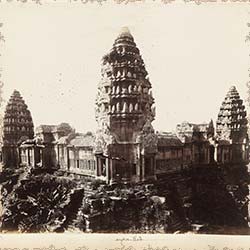
Angkor Wat Temple, with Four Ways or Gates
Three Ways and a Fourth Way
[GURDJIEFF] “The fourth way has no definite forms like the ways of the fakir, the monk, and the yogi… it is never a permanent way… and there are no institutions connected with it. It appears and disappears governed by some particular laws of its own.” i
The four ways lead to the same destination: developing unity in the human being. Three are considered ‘traditional’ because they encompass all the traditions we know — Buddhism, Christianity, Sufism, Hinduism, etc. They develop unity through focusing on the physical body, or the emotions, or the mind.
[GURDJIEFF] “If we imagine humanity in the form of… concentric circles, we can imagine four gates on the circumference of the… inner circle through which people of the [outer] circle can penetrate. These four gates correspond to the four ways.” i
The three traditional ways begin by requiring a complete change of life. You have to join an order that specializes in one specific way, or find a teacher, always in isolation from the outside world; a Christian brotherhood in Mount Athos, a Buddhist monastery in Tibet, a Sufi Tekke in Iran. You cannot participate in them part-time or enter them gradually. A total commitment is required from the very beginning.
But we know so little at the beginning, we could easily choose a way unsuitable for us and lose valuable time. How long can we hope to spend on search alone, before even beginning real work? Perhaps in past ages, when schools were more closely integrated with society, this was possible. But for a person living in the modern age, with family and career responsibilities, this is impractical.
[GURDJIEFF] “And the position would indeed be hopeless if the possibility of yet a fourth way did not exist…” i

Four Ways or Gates into Khmer Temple, Angkor

Angkor Wat Temple, with Four Ways or Gates
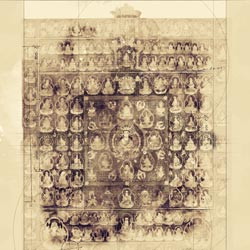
Four Ways or Gates into Heart of Mandala, Tibet

Four Ways or Gates into Heart of Mandala, Tibet



The Fourth Way
The fourth way isn’t traditional so it isn’t apparent. You don’t know of it so you can’t search for it. A person gravitates toward the fourth way inadvertently, by being dissatisfied with the one-sided approach of the three traditional ways.
Excessive focus on the body overlooks the emotional dimension so crucial for understanding human behavior. Excessive focus on emotions glosses over the inquisitive nature of the mind and takes too many things for granted. Excessive focus on the mind lapses into pointless debate and impractical theorizing. So a typical seeker of the fourth way senses these shortcomings without knowing there exists an alternative.
And we have every evidence that Gurdjieff’s Seekers of Truth did precisely this. They joined monasteries of the three traditional ways and participated in each, until they exhausted what they had to offer. At that point, they took what they had learned and continued their search.
There has to be an element of slyness in such an endeavor. On the one hand, to join the ranks of a brotherhood, you must vow complete dedication. On the other hand, once the brotherhood no longer serves your aim, you must break this vow with no remorse of conscience. Only such an approach would account for the diversity of Gurdjieff’s sources as well as the lack of traditional religious morality in his presentation.
[JOHN BENNETT] “Gurdjieff more than once said that he had taken and used certain ideas for purposes that were not approved by the brotherhood in which they had originated.” i
Unconcerned with complying with religious authorities, unconcerned with pleasing any one creed, Gurdjieff was looking for the truth and did not stop till his conscience told him he had found it.
Gurdjieff’s possible encounter with the Fourth Way
So when and where did Gurdjieff encounter the Fourth Way? To answer this question, we must look deeper into the history of the Fourth Way. However, if the Fourth Way is never permanent, if there are no institutions connected to it, then it likely sheds its name with each disappearance. So we can’t study the history of the Fourth Way by searching for the historic appearance of the term ‘Fourth Way’. We must understand its spirit and search for past appearances of that same spirit.
The name ‘Seekers of Truth’ captures the spirit of searching for objective truth unaffiliated with any particular tradition. And, apparently, so does the name ‘Sarmoung.’
Sarmoung Brotherhood as The Fourth Way
[JOHN BENNETT] “‘Sarmoun’ or ‘Sarman’ can be assigned to old Persian. The word can be interpreted in three ways. It is the word for ‘bee’, which has always been the symbol of those who collect the precious ‘honey’ of traditional wisdom and preserve it for future generations… [Another meaning is] the chief repository of the tradition passed down from generation to generation… And still another possible meaning is ‘those who have been enlightened’.” ii
If we take Gurdjieff’s description of the Sarmoung brotherhood literally, it is much too formal to be a Fourth Way school. A brotherhood founded in 2500BC that functions uninterruptedly up to the 20th century is the diametrical opposite of a way that has no definite form, that appears and disappears governed by some laws of its own. This means that if Gurdjieff found an ancient, secret brotherhood — as special as it might have been — it would have had to belong to one of the three ways.
But if the Sarmoung Brotherhood was not a Fourth Way school, then where did Gurdjieff encounter the Fourth Way?


The Task of a Fourth Way School
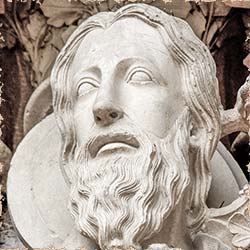
Moses, founder of Judaism

Buddha, founder of Buddhism
To understand the spirit of the Fourth Way we must understand its task, and to understand this task we must first understand how the traditional ways function.

Moses, founder of Judaism

Jesus, founder of Christianity
Each traditional way develops similarly. It begins with a spark ignited by a founder: Moses, Jesus, Buddha, Lao Tzu, Confucius, Muhammad, and so forth. When the founder dies, their teaching spreads as it is handed down from one generation to another. With each transmission, the message inevitably strays farther and farther away from the founder, replacing its original spark with dogma.
[GURDJIEFF] “People lose the keys, and transmit the words of others without any verification.” iii
Once the inner meaning is lost, we are left exclusively with an outer, literal interpretation. We can see this in all religions today, which are not ways at all. They no longer aim to instruct people how to become unified. They have retained exclusively the religious moral code, instructing their followers how to behave, how to treat each other, and how to relate to an external God.
Inevitably, within a few generations, all traditional ways would degenerate altogether and the inner circle would disappear, unless an external agent periodically revived their original meaning. Such an agent would have to function outside of the traditional ways or it would immediately be considered blasphemous by the dogma it threatens.
Herein lies the need for a fourth untraditional way that periodically regenerates the other three. It can serve as an ark that safe-keeps their original impulse while the dogmatic coating is purged. So if you want to study the history of the Fourth Way, study the history of arks.

Buddha, founder of Buddhism
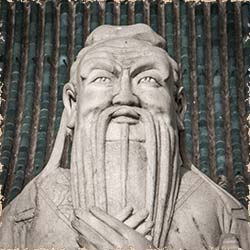
Confucius, founder of Confucianism

Jesus, founder of Christianity

Confucius, founder of Confucianism


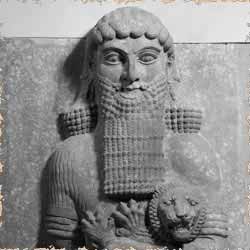
Epic of Gilgamesh and the Earliest Appearance of an Ark Myth
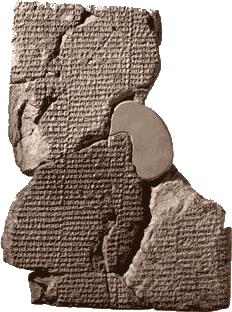
Sumerian Flood Tablets
Ark Myths
The very first mention of an ark comes from the Epic of Gilgamesh, the story recounted to Gurdjieff in his childhood by his father. Gilgamesh is thought to have reigned in 2700 BC. The earliest known Sumerian poems about Gilgamesh date from 2100–2000 BC. One of these features a flood myth.
So right around the time the alleged Sarmoung Brotherhood is formed — and in the very same region — we find the earliest story of the flood.
[GURDJIEFF]
“I will tell thee, Gilgamesh,
Of a mournful mystery of the Gods:
How once, having met together,
They resolved to flood the land of Shuruppak.
Clear-eyed Ea, saying nothing to his father, Anu,
Nor to the Lord, the great Enlil,
Nor to the spreader of happiness, Nemuru,
Nor even to the underworld prince, Enua,
Called to him his son Ubara-Tut;
Said to him: ”Build thyself a ship;
Take with thee thy near ones,
And what birds and beasts thou wilt;
Irrevocably have the Gods resolved
To flood the land of Shuruppak.” iv
Subsequent variations on a flood myth appear in nearly all cultures around the globe: in Greek mythology, in the Book of Genesis, in the Hindu texts, in Norse Mythology, in the lore of the Maya from Mesoamerica — to name a few.
The outer meaning of these myths is hardly credible. There may be periodic floods, but it is unlikely one person in so many different cultures predicts them, impossible that they wipe out entire populations, and therefore unfounded that mankind periodically be purged and regenerated. So these myths must be allegorical.

Epic of Gilgamesh and the Earliest Appearance of an Ark Myth

Noah’s Ark in the Biblical Flood Myth
The Fourth Way Bridges Intervals in Life
[GURDJIEFF] “There are periods in the life of humanity… often coinciding with geological cataclysms, climatic changes, and similar phenomena of a planetary character, when the masses irretrievably lose their reason and begin to destroy everything that has been created by centuries and millenniums of culture… Such periods release a very great quantity of the matter of knowledge. This, in its turn, necessitates the work of collecting this matter of knowledge which would otherwise be lost.” i
To be clear, from the point of view of the inner circle of humanity, climate change and geological cataclysm are secondary problems. The main problem is humankind losing their reason and destroying centuries and millennia of culture. The inner circle needs to build an ark to retain the useful in these endangered cultures before they are forever washed away.
This is the task of a fourth way school. This is what Gurdjieff did at the end of the 19th century. He was born and raised in a pre-industrial environment, and died some eight decades later in a fully industrialized world. His life spanned the optimal stretch of time for gathering living embers from one era and fanning them into a new flame in another.

Sumerian Flood Tablets
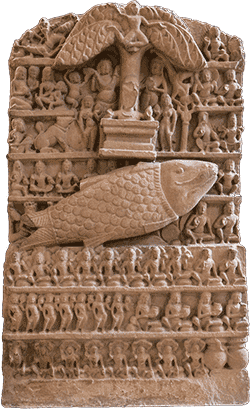
Matsya Incarnation in the Hindu Flood Myth
It is incredibly poetic that Gurdjieff the boy would hear from his father the story of the Sumerian flood — passed down from one bard to another for 4000 years — then learn of its discovery in a magazine, and then end up dedicating his life to building one.
The twentieth century was certainly a period in which ‘the masses irretrievably lost their reason.’ At least 100 million people died in wars. Cities were razed, and with them traditions, temples, books, art — and so many other relics from our past. The loss was incalculable.
The Hindu horse, carriage, and driver; the Buddhist prince growing up in prison; Jesus meeting the man possessed by devils; the unification of the Kingdom of Israel — all these are well-known in the mainstream of their respective religions. Any member of these religions can tell you about them. But you cannot find their esoteric interpretation anywhere, except in Gurdjieff’s teaching and that of his followers. As best as we can tell, he alone preserved their inner meaning.
Gurdjieff’s accounts and those of his students suggest that he was aware of the magnitude of his task but naive to its details. After all, the journey doesn’t end once a person crosses the first wall from the outer circle inward. There are further concentric circles to penetrate, further levels of being to attain. The teacher is also on a learning curve. He moves further inward by helping others take his place.
[GURDJIEFF] “Each pupil is a teacher to the one who stands lower than he. Everybody can become like me only if they wish to suffer and work as I did.” v

Noah’s Ark in the Biblical Flood Myth

Matsya Incarnation in the Hindu Flood Myth


Legacy of a Fourth Way School
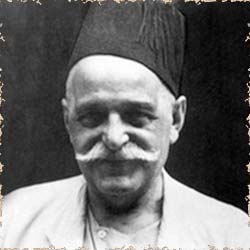
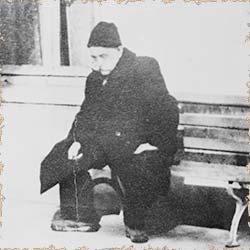
Last Known Photo of George Gurdjieff (1948)
What, then, happens to a Fourth Way ark once its task is complete?
[JOHN BENNETT] “[After Gurdjieff’s death] the typical factions began to appear. Some favored the meticulous preservation, unchanged, of everything that Gurdjieff had said or done. Others were sure that he had given them a private directive that entitled them to work independently of the rest. Others were prepared to sacrifice everything for unity.” vi
[JEANNE DE SALZMANN] “When a Teacher like Mr. Gurdjieff goes, he cannot be replaced. Those who remain cannot create the same conditions, We have only one hope: to make something together… Let us make this our chief aim in the future.” vi
The more conservative followers seek to formalize Gurdjieff’s teaching and preserve it for future generations. They canonize his dances, music, and writings.


Fourth Way Dissolving into Other Three Ways
You cannot preserve without institutionalizing, so you cannot preserve without losing the Fourth Way spirit. Despite the best of intentions, your institution will gravitate toward a focus on one of the three primary centers. It will either acquire a predominant intellectual focus (developing and debating the ideas about the human being and our place in the universe), or an emotional focus (struggle with negative emotions, nurturing consideration for others, devotion to higher forces), or a physical focus (dances and movements). The Fourth Way — to remain Fourth Way — must disappear when its task as ark is complete.
The three traditional ways hand down responsibility from one generation to the next by set laws. The Buddhists have prescribed ways of choosing their next Lama, the Catholics their next Pope. But since the Fourth Way lacks institution, such a physical bequeathment is impossible. The spirit of the Fourth Way itself must reappear “governed by some particular laws of its own,” independent of any human choice or influence.
Which means Gurdjieff doesn’t get to choose his heir, just like the monasteries he visited didn’t elect him to export their knowledge to the west.

Last Known Photo of George Gurdjieff (1948)
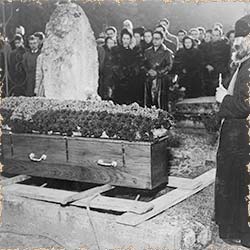
Gurdjieff’s Funeral
Seekers of Truth as the Fourth Way
This places the Seekers of Truth in a completely different light. It’s not that they sought far and wide and eventually found the answer in a secret brotherhood hidden in the caves of Central Asia. Their search was their learning. After two decades of combing the Middle East, Central Asia, and the Far East for truth — without compromise, without settling for any of the three traditional ways — Gurdjieff’s Seekers of Truth became the Fourth Way.
[ANNA BUTKOVSKY-HEWITT] “Only one condition is essential,” wrote Anna Butkovsky: “that they seek sincerely, and seek the Genuine without compromise, the highest and most pure. These people will discern, because their hunger is commensurate with the sacred Truth which they have yet to find.” vii
Time flows on. A century has passed since that mysterious man set foot in Moscow. His teaching, then exclusive and radical, is now mainstream and dilute. Scores of groups practice his movements, play his music, and discuss his ideas. Meanwhile, new seekers arrive. Who will persist in their search without compromise? Who will garner the courage to see beyond the outer meaning of the traditional ways? Who will pay the price Gurdjieff paid? Someone must, because the need remains. A new generation has to build another ark to preserve the spirit of the Sarmoung through the relentless floods of time.
.
Frequently Asked Questions
What is the Fourth Way?
It differs from other paths in that it works on the intellectual, emotional and physical being simultaneously. As an esoteric practice, it is also free from the external trappings of religion and adapts in life to the time and circumstances in which the seeker finds themselves in.
“The fourth way has no definite forms like the ways of the fakir, the monk, and the yogi… It is never a permanent way… and there are no institutions connected with it.” — Gurdjieff
What are the three traditional ways according to Gurdjieff?
1. The Way of the Fakir – Focuses on mastery of the physical body through extreme physical discipline and endurance (e.g., yogis lying on nails, ascetics).
2. The Way of the Monk – Centers on devotion and the emotional center, often requiring complete emotional surrender to a higher power, typically practiced in monasteries.
3. The Way of the Yogi – Develops the intellectual or mental center, focusing on knowledge, concentration, and mental discipline (e.g., deep meditation and philosophy).
Each requires total commitment from the beginning, isolation from normal life (monasteries, ashrams, retreats) and exclusive development of one center (body, heart, or mind), often at the expense of the others.
Sources
- In Search of the Miraculous by Peter Deminaovich Ouspensky
- Gurdjieff: Making a New World by John Godolphin Bennett
- Views from the Real World by George Ivanovich Gurdjieff
- Meetings with Remarkable Men by George Ivanovich Gurdjieff
- Our Life with Mr. Gurdjieff by Thomas and Olga de Hartmann
- Witness by John Godolphin Bennett
- With Gurdjieff in St. Petersburg and Paris by Anna Butkovsky-Hewitt


Gurdjieff’s Funeral

Part I:
Gurdjieff
Part II:
The Teaching
Part III:
The School
Part IV:
Initiation